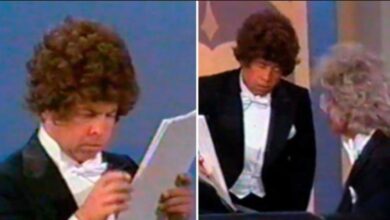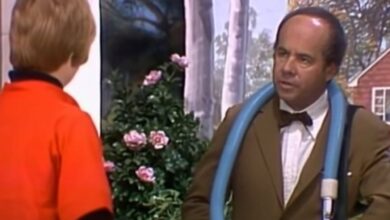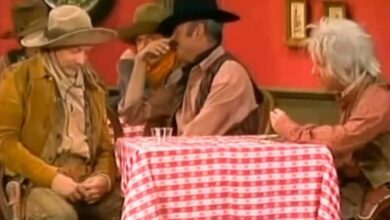Patsy Cline’s ‘Walkin’ After Midnight’ Opens New Doors for Country-Pop Crossover in 1957
In 1957, a song barely over two minutes long changed the trajectory of one of country music’s most iconic voices. “Walkin’ After Midnight,” performed by Patsy Cline, was a revelation. Blending country twang with a smooth pop sensibility, the track bridged a gap between Nashville and New York, appealing to fans on both sides of the genre divide. It reached No. 2 on the country charts and climbed to No. 12 on the Billboard pop chart—a rare feat at the time. For Cline, it was more than a hit; it was an introduction to the world, and what an unforgettable introduction it was.
Born Virginia Patterson Hensley in Winchester, Virginia, Patsy Cline had music in her soul from a young age. Raised in a working-class family and shaped by the trials of the Depression era, she began performing locally in her teens. What set Cline apart wasn’t just her powerful, velvety voice—it was the raw emotion she poured into every lyric, often drawn from personal struggle. Before her breakout, she performed tirelessly at local clubs and on regional radio, steadily building a reputation as one of the most promising voices in the Mid-Atlantic.
The backstory of “Walkin’ After Midnight” is almost as compelling as the song itself. Written by Alan Block and Don Hecht, the track was initially rejected by Cline, who didn’t think it suited her style. However, at the urging of her manager and Four Star Records, she reluctantly agreed to perform it on the televised talent show Arthur Godfrey’s Talent Scouts in January 1957. That live performance—powerful, controlled, and brimming with charisma—brought the studio audience to its feet and led to an immediate record deal. The audience had spoken: the song was a hit, and so was she.
The recording of “Walkin’ After Midnight” was a polished affair, handled by the reputable Owen Bradley, who would later become Cline’s longtime producer. Bradley’s influence introduced a rich, orchestral backdrop to Cline’s voice, a style that would eventually help define the “Nashville Sound.” The session included steel guitar and piano, but also smooth string arrangements that softened the song’s country edge. Cline’s vocal delivery was both restrained and haunting, perfectly embodying the yearning and loneliness of the lyrics.
Following its release, the song quickly soared on the charts. It gained heavy rotation not just on country radio but also on mainstream pop stations, a rarity for a female country artist at the time. The success of “Walkin’ After Midnight” brought Cline national recognition, landing her on high-profile programs like The Grand Ole Opry and American Bandstand. While she had other singles before this, none had come close to the impact of this breakout moment.
Culturally, the song was a landmark. It helped shift perceptions of what country music could be, especially in an era when the genre was often dismissed outside the South and Midwest. Cline’s voice, both accessible and elegant, made the genre more palatable to a wider audience. Her refined style challenged the honky-tonk stereotypes and opened the door for other women in country music to pursue crossover success.
Professionally, “Walkin’ After Midnight” was the catalyst that transformed Cline from a regional artist into a national sensation. It brought in tour opportunities, interviews, and collaborations with established Nashville producers. However, her relationship with Four Star Records remained restrictive, limiting her creative control and access to stronger material. Still, the public’s response to the song ensured that she would soon be in demand with larger labels and broader markets.
Its influence extended beyond Cline’s career. The song became a template for future country-pop tracks, proving that rural storytelling and mainstream pop arrangements could coexist. Artists like Brenda Lee and later Linda Ronstadt would build on the path that “Walkin’ After Midnight” paved, continuing the fusion of genres that Cline helped ignite.
Notably, “Walkin’ After Midnight” has been covered by a wide range of artists, from k.d. lang to Geri Halliwell, each interpreting it through their own lens. Yet, none quite capture the aching authenticity of the original. The simplicity of the lyrics—about wandering alone and yearning for love—transcends time, and Cline’s delivery remains definitive.
Around the time of its release, Cline’s personal life was far from settled. She was in a troubled marriage and struggling with the demands of her career. Still, her determination never wavered. She juggled motherhood, public expectations, and a grueling performance schedule, often performing through illness or exhaustion. The success of “Walkin’ After Midnight” may have seemed like an overnight phenomenon, but it was the result of years of resilience.
In the decades since its release, “Walkin’ After Midnight” has never truly left the cultural landscape. It’s included in countless “greatest country songs” lists and remains a staple on classic country radio. Its enduring popularity is a testament to its timeless sound and the emotional honesty at its core. For many, it is the quintessential Patsy Cline song—elegant, aching, and unforgettable.
The track also marked an evolution in country music production. Bradley’s smooth arrangements set a new standard for how country records could sound, influencing generations of producers in both Nashville and Los Angeles. It wasn’t just a song—it was a sonic blueprint.
Cline would go on to achieve even greater success with songs like “Crazy” and “I Fall to Pieces,” but “Walkin’ After Midnight” was the spark. It introduced her to the nation and set a tone for a career defined by grace, heartbreak, and resilience. It made her not just a singer, but a symbol of perseverance and elegance in American music.
Today, more than 65 years after it first hit the airwaves, the song still walks with us. Whether heard late at night on the radio or performed live by aspiring vocalists, its melancholy charm endures. It’s a reminder of Patsy Cline’s unmatched artistry and a touchstone for what country music can achieve when heart meets voice and soul meets sound.





